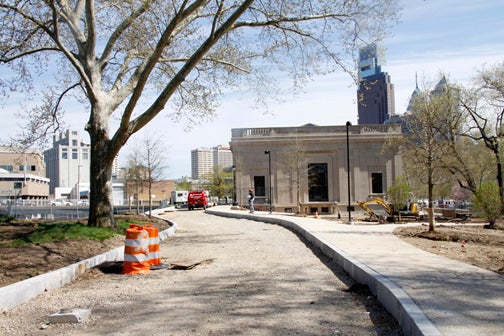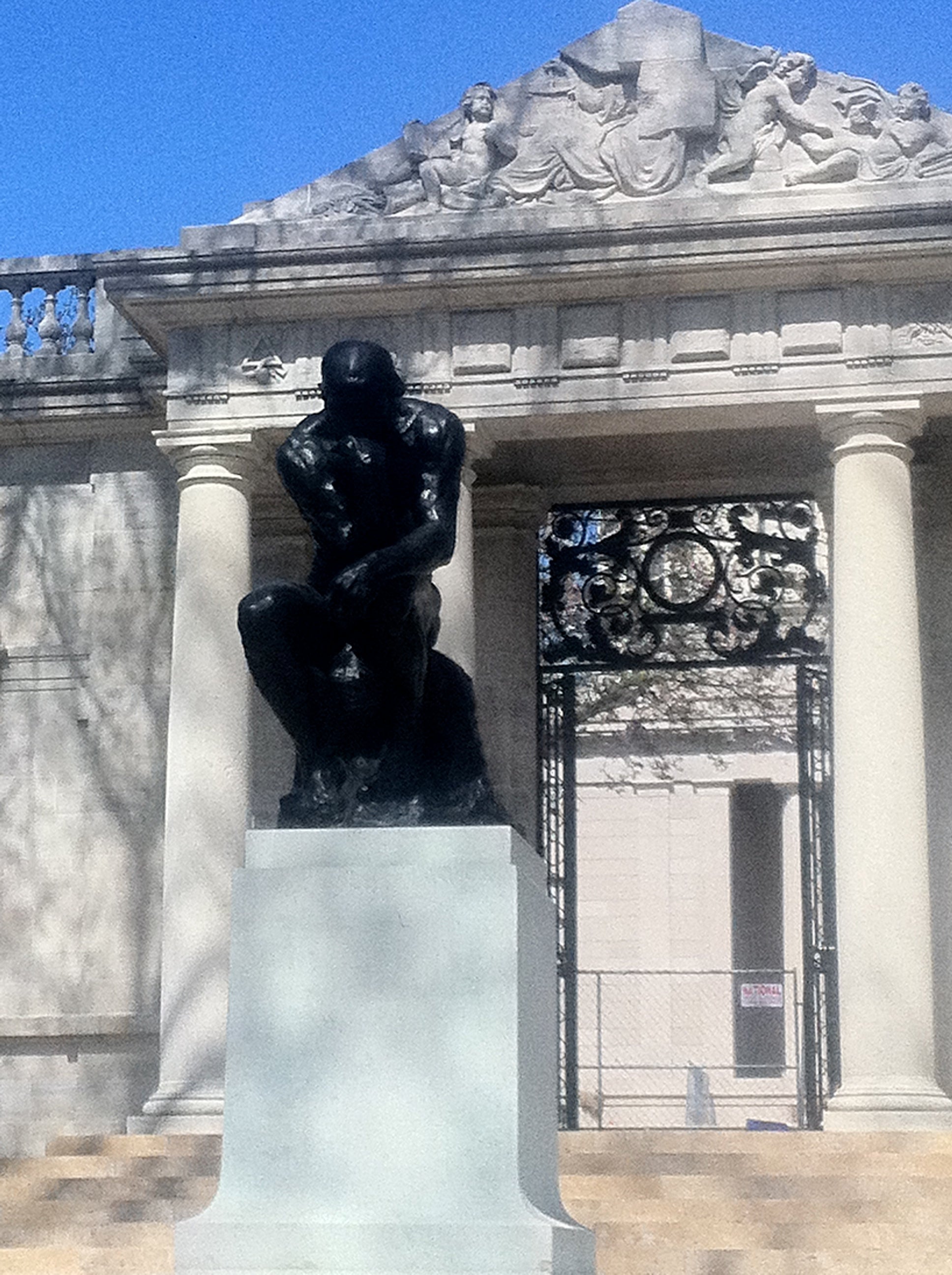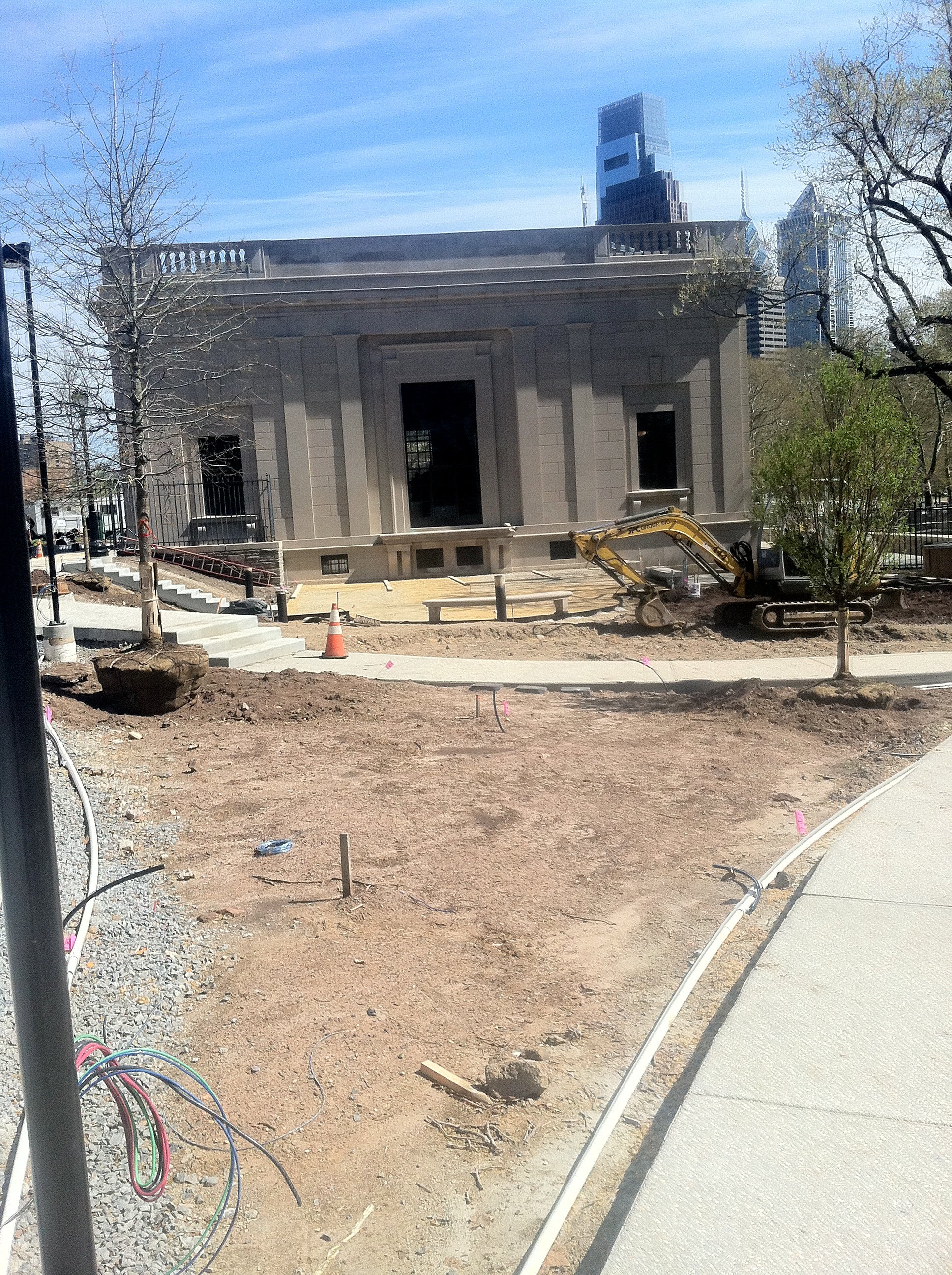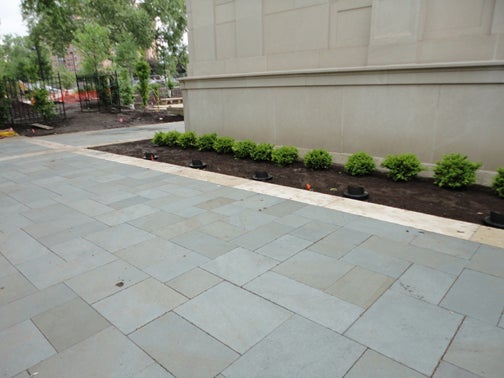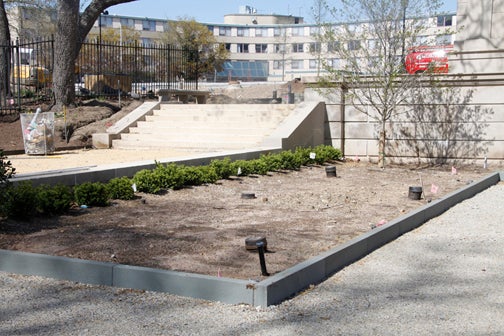Rodin Museum Garden readies for unveiling
Soon — most likely after the extended Welcome America-athon is over — the wrapping will come off of the $4+ million restoration of the Rodin Museum gardens.
For anyone who’s ever recognized its potential as a great public space and wondered why it’s become so tattered, the revamp can’t come soon enough. “This kind of thing happens when there’s no focus,” says Nancy O’Donnell, director, Philadelphia Green, one of the partners (through the Pennsylvania Horticultural Society) in the project to recreate the space. “A lot of hands got in the mix and things start to not make sense from a design standpoint.”
The new design seeks to remove misguided interventions — like the one that placed a line of yew trees along the front of the museum building — and return to the simpler 1929 formal French plan envisioned by the park’s designer Jacques Greber.
“This completes our goal of restoring the Rodin Museum inside and out,” says Gail Harrity, president of the Philadelphia Museum of Art, which administers the Rodin. “We’re committed to being re-inspired by the original ideas and splendor of Paul Cret [the building’s architect] and Greber.”
While ridding the space of encroaching and diseased trees, designers have added other trees, as well as created two perennial beds, laid in new paths, updated lighting, and addressed accessibility issues.
“Basically this had become an overgrown landscape,” says Allan Spulecki of OLIN, the project’s landscape architects. The site was also plagued by erosion, he adds, with paving, staircases, and stonework “all falling apart.”
The air of neglect made the park hospitable to the homeless and rodents, and encouraged others to use it as an informal parking lot. Meanwhile, intrepid walkers looking for shortcuts to and from the Parkway trod their own way through the grounds, creating a so-called “desire path.”
The new plan includes a proper road to ease walkers’ movements. Non-landscaping work also includes stone facade cleaning and repair, conservation of the historic Meudon Gate, plumbing and electrical work, and repair and replacement of terrace paving and limestone steps.
The work continues outside on the Parkway itself, where a variety of parties have completed improvements on cracked sidewalks and curbs.
But it’s the reinvigorated planting schemes that should prove most exciting as they mature over the next few springs. Working with PHS, OLIN has incorporated natives used in the original design, such as fragrant viburnum and honeysuckle. Extant, and thriving, flowering trees like magnolias and cherries still ring the site, while the interior courtyard enjoys new perennial beds that will change with the seasons. “We couldn’t find any documentation of what was intended for these beds,” says Spulecki, “but in looking through archives at the Athenaeum and at Penn, we found some of the original plans and correspondence associated with the project.”
For example, he says, Cret was quite specific about the incorporation of boxwood hedges. And other designs of a similar nature by Greber shows formal boxes filled with bulbs, surrounded by boxwood. “We’re not trying to replicate history, but to create a design that is in keeping with a Beaux Arts garden,” Spulecki continues. “It’s a perennial display that’s honorific and conservative to the scale of the rest of the site.” At just four acres, the entire garden “doesn’t require a lot, nor should it shout out,” concludes Spulecki. “It should blend with the building and work with it as an ensemble.”
The redesign is the final piece of an ongoing restoration plan for the Benjamin Franklin Parkway. With several other major unrelated projects underway, including a total revamp of Dilworth Plaza and the upcoming Barnes Museum, the face of the Parkway is changing every day.
“We’re finally seeing the realization of what is an extraordinary, iconic boulevard,” Harrity says. “The Rodin Museum can at last become sort of a central stopping point on the Parkway. A place that’s tranquil yet vibrant.”
Contact the reporter at jgreco@planphilly.com
WHYY is your source for fact-based, in-depth journalism and information. As a nonprofit organization, we rely on financial support from readers like you. Please give today.



